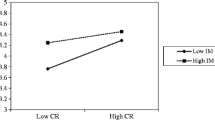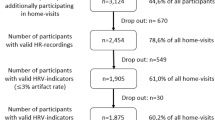Abstract
Background: Social relationships are reliably related to rates of morbidity and mortality. One pathway by which social relationships may influence health is via the impact of relationship quality on cardiovascular reactivity during social interactions.Purpose and Method: This study examined the effects of the quality of a friendship on cardiovascular reactivity when speaking about positive or negative life events with an ambivalent or supportive friend. To examine this, 107 healthy male and female adults (and their same-sex friend) were recruited.Results: Results revealed that participants exhibited the greatest levels of systolic blood pressure reactivity when discussing a negative event with an ambivalent friend compared to a supportive friend. We also found higher resting levels of heart rate and lower respiratory sinus arrhythmia among those who brought in ambivalent friends than those who brought in supportive friends.Conclusion: Individuals may not be able to fully relax in the presence of ambivalent friends and may not benefit from support during stress. This research may help clarify the health-related consequences of differing types of social relationships.
Similar content being viewed by others
References
Berkman LF: The role of social relations in health promotion.Psychosomatic Medicine. 1995,57:245–254.
Cohen S: Psychosocial models of the role of social support in the etiology of physical disease.Health Psychology. 1988,7:269–297.
Berkman LF, Glass T, Brissette I, Seeman TE: From social integration to health: Durkheim in the new millennium.Social Science and Medicine. 2000,51:843–857.
House JS, Landis KR, Umberson D: Social relationships and health.Science. 1988,241:540–545.
Uchino BN:Social Support and Physical Health: Understanding the Health Consequences of Our Relationships. New Haven, CT: Yale University Press, 2004.
Braiker HB, Kelly HH: Conflict in the development of close relationships. In Burgess RL, Huston TL (eds),Social Exchange in Developing Relationships. New York: Academic, 1979, 135–168.
Major B, Zubek JM, Cooper ML, Richards C: Mixed messages: Implications of social conflict and social support within close relationships for adjustment to a stressful life event.Journal of Personality and Social Psychology. 1997,72:1349–1363.
Friedman HS, Tucker JS, Schwartz JE, et al.: Psychosocial and behavioral predictors of longevity: The aging and death of the “Termites.”American Psychologist. 1995,50:69–78.
Tucker JS, Friedman HS, Wingard DL, Schwartz JE: Marital history at midlife as a predictor of longevity: Alternative explanations to the protective effects of marriage.Health Psychology. 1996,15:94–101.
Finch JF, Okun MA, Barrera M, Zautra AJ, Reich JW: Positive and negative social ties among older adults: Measurement models and the prediction of psychological distress and well-being.American Journal of Community Psychology. 1989,17:585–605.
Fiore J, Becker J, Coppel DB: Social network interactions: A buffer or a stress?American Journal of Community Psychology. 1983,11:423–439.
Kiecolt-Glaser JK, Dyer CS, Shuttleworth EC: Upsetting social interactions and distress among Alzheimer’s Disease family caregivers: A replication and extension.American Journal of Community Psychology. 1988,116:825–837.
Ruehlman LS, Karoly P: With a little Flak from my friends: Development and preliminary validation of the Test of Negative Social Exchange (TENSE).Psychological Assessment. 1991,3:97–104.
Uchino BN, Holt-Lunstad J, Uno D, Flinders JB: Heterogeneity in the social networks of young and older adults: Prediction of mental health and cardiovascular reactivity during acute stress.Journal of Behavioral Medicine. 2001,24:361–382.
Coyne JC, DeLongis A: Going beyond social support: The role of social relationships in adaptation.Journal of Consulting and Clinical Psychology. 1986,54:454–460.
Uchino BN, Holt-Lunstad J, Smith TW, Bloor L: Heterogeneity in social networks: A comparison of different models linking relationships to psychological outcomes.Journal of Social and Clinical Psychology. 2004,23:123–139.
Holt-Lunstad J, Uchino BN, Smith TW: Relationship quality predicts ambulatory blood pressure during social interactions.Health Psychology. 2003,22:388–397.
Uno DF, Uchino BN, Smith TW: Relationship quality moderates the effect of social support given by close friends on cardiovascular reactivity in women.International Journal of Behavioral Medicine. 2002,9:243–262.
Smith TW, Ruiz JM, Uchino BN: Vigilance, active coping, and cardiovascular reactivity during social interaction in young men.Health Psychology. 2000,19:382–392.
Lepore SJ: A social-cognitive processing model of emotional adjustment to cancer. In Baum A, Andersen BL (eds),Psychosocial Interventions for Cancer. Washington, DC: American Psychological Association, 2001, 99–116.
Smith TW, Ruiz JM: Psychosocial influences on the development and course of coronary heart disease: Current status and implications for research and practice.Journal of Consulting and Clinical Psychology. 2002,70:548–568.
Treiber FA, Kamarck T, Schneiderman N: Cardiovascular reactivity and development of preclinical and clinical disease states.Psychosomatic Medicine. 2003,65:46–62.
Cacioppo JT, Malarkey W, Kiecolt-Glaser JK, et al.: Heterogeneity in neuroendocrine and immune responses to brief psychological stressors as a function of autonomic cardiac activation.Psychosomatic Medicine. 1995,57:154–164.
Sherwood A, Allen M, Fahrenberg J, et al.: Methodological guidelines for impedance cardiography.Psychophysiology. 1990,27:1–23.
Friedman E: The effects of normal and rapid speech on blood pressure.Psychosomatic Medicine. 1982,44:545–553.
Pagal MD, Erdly WW, Becker J: Social networks: We get by with (and in spite of) a little help from our friends.Journal of Personality and Social Psychology. 1987,53:793–804.
Uchino BN, Kiecolt-Glaser JK, Cacioppo JT: Age-related changes in cardiovascular response as a function of a chronic stressor and social support.Journal of Personality and Social Psychology. 1992,63:839–846.
Pierce GR, Sarason IG, Sarason BR: General and relationships-specific perceptions of social support: Are two constructs better than one?Journal of Personality and Social Psychology. 1991,61:1028–1039.
Kiesler DJ, Anchin JC, Perkins MJ, et al.:The Impact Message Inventory: Form II. Palo Alto, CA: Consulting Psychologists Press, 1985.
Kiesler DJ, Schmidt JA, Wagner CC: A circumplex inventory of impact messages: An operational bridge between emotion and interpersonal behavior. In Plutchik R, Conte HR (eds),Circumplex Models of Personality and Emotions. Washington, DC: American Psychological Association, 1997, 221–244.
Nealy JB, Smith TW, Uchino BN: Cardiovascular responses to agency and communion stressors in young women.Journal of Research in Personality. 2002,36:395–418.
Marteau TM, Bekker H: The development of a six-item short form of the state scale of the Spielberger state-trait anxiety inventory (STAI).British Journal of Clinical Psychology. 1992,31:301–306.
Sherwood A, Allen M, Fahrenberg J, et al.: Methodological guidelines for impedance cardiography.Psychophysiology. 1990,27:1–23.
Uchino BN, Uno D, Holt-Lunstad J, Flinders JB: Age-related differences in cardiovascular reactivity during acute psychological stress in men and women.Journal of Gerontology. 1999,54:339–346.
Berntson G, Quigley K, Jang J, Boysen S: An approach to artifact identification: Application to heart period data.Psychophysiology. 1990,27:586–598.
Neuvo Y, Cheng-Yu D, Mitra S: Interpolated finite impulse response filters.IEEE Transactions on Acoustics, Speech, and Signal Processing, ASSP—32. 1984, 563–570.
Manuck SB, Kaplan JR, Clarkson TB: Behaviorally induced heart rate reactivity and atherosclerosis in Cynomolgus monkeys.Psychosomatic Medicine. 1983,45:95–108.
Light KC, Dolan CA, Davis MR, Sherwood A: Cardiovascular responses to an active coping challenge as predictors of blood pressure patterns 10 to 15 years later.Psychosomatic Medicine. 1992,54:217–230.
Kamarck TW, Jennings JR, Debski TT, et al.: Reliable measures of behaviorally-evoked cardiovascular reactivity from a PC-based test battery: Results from student and community samples.Psychophysiology. 1992,29:17–28.
Llabre MM, Spitzer SB, Saab PG, et al.: The reliability and specificity of delta versus residualized change as measures of cardiovascular reactivity to behavioral challenges.Psychophysiology. 1992,28:701–711.
Benjamin LS: Facts and artifacts in using analysis of covariance to “undo” the law of initial values.Psychophysiology. 1967,4:187–206.
Hays W:Statistics. New York: Holt, Rinehart, and Winston, 1988.
Taylor S: Asymmetrical effects of positive and negative events: The mobilization minimization hypothesis.Psychology Bulletin. 1991,110:67–85.
Coyne JC, DeLongis A: Going beyond social support: The role of social relationships in adaptation.Journal of Consulting and Clinical Psychology. 1986,54:454–460.
Berntson GG, Bigger JT, Eckberg DL: Heart rate variability: Origins, methods, and interpretive caveats.Psychophysiology. 1997,34:623–648.
Grossman P, Kollai M: Respiratory sinus arrhythmia, cardiac vagal tone, and respiration: Within- and between-individual relations.Psychophysiology. 1993,30:486–495.
Berntson GG, Cacioppo JT, Binkley PF, et al.: Autonomic cardiac control. III. Psychological stress and cardiac response in autonomic space as revealed by pharmacological blockades.Psychophysiology. 1994,31:599–608.
Cacioppo JT, Berntson GG, Binkley PF, et al.: Autonomic cardiac control II: Basal response, noninvasive indices, and autonomic space as revealed by autonomic blockade.Psychophysiology. 1994,31:586–598.
Grossman P, Van Beek J, Wientjes C: A comparison of three quantification methods for estimation of respiratory sinus arrhythmia.Psychophysiology. 1990,27:702–714.
Gable SL, Reis HT, Impett EA, Asher ER: What do you do when things go right? The intrapersonal and interpersonal benefits of sharing positive events.Journal of Personality and Social Psychology. 2004,87:228–245.
Fredrickson BL: The role of positive emotions in positive psychology: The broaden-and-build theory of positive emotions.American Psychologist. 2001,56:218–226.
Cacioppo JT, Hawkley LC, Crawford E: Loneliness and health: Potential mechanisms.Psychosomatic Medicine. 2002,64:407–417.
Cacioppo JT, Berntson GG: Relationship between attitudes and evaluative space: A critical review, with emphasis on the separability of positive and negative substrates.Psychological Bulletin. 1994,115:401–423.
Rook KS: The negative side of social interaction: Impact on psychological well being.Journal of Personality and Social Psychology. 1984,46:1097–1108.
Schuster TL, Kessler RC, Aseltine RH: Supportive interactions, negative interactions, and depressed mood.American Journal of Community Psychology. 1990,18:423–438.
Lepore SJ: Social conflict, social support, and psychological distress: Evidence of cross-domain buffering effects.Journal of Personality and Social Psychology. 1992,63:857–867.
Smyth JM: Written emotional expression: Effect sizes, outcome types, and moderating variables.Journal of Consulting and Clinical Psychology. 1998,66:174–184.
Frisina PG, Borod JC, Lepore SJ: A meta-analysis of the effects of written emotional disclosure on health outcomes of clinical populations.Journal of Nervous and Mental Disease. 2004,192:629–634.
Pargament KI: Religious methods of coping: Resources for the conservation and transformation of significance. In Shafranske EP (ed),Religion and the Clinical Practice of Psychology. Washington, DC: American Psychological Association, 1996, 215–239.
Fingerman KL, Hay EL, Birditt KS: The best of ties, the worst of ties: Close problematic, and ambivalent social relationships.Journal of Marriage and Family. 2004,66:792–808.
Farr W: Influence of marriage on the mortality of the French people. In Humphreys N (ed),Vital Statistics: A Memorial Volume of Selections from Reports and Writings of William Farr. Methuen, NY: The Scarecrow Press (Original work published 1858), 1994, 438–441.
Kiecolt-Glaser JK, Newton TL: Marriage and health: His and hers.Psychology Bulletin. 2001,127:472–503.
Christenfield N, Gerin W, Linden W, et al.: Social support effects on cardiovascular reactivity: Is a stranger as effective as a friend?Psychosomatic Medicine. 1997,59:388–398.
Author information
Authors and Affiliations
Corresponding author
About this article
Cite this article
Holt-Lunstad, J., Uchino, B.N., Smith, T.W. et al. On the importance of relationship quality: The impact of ambivalence in friendships on cardiovascular functioning. ann. behav. med. 33, 278–290 (2007). https://doi.org/10.1007/BF02879910
Issue Date:
DOI: https://doi.org/10.1007/BF02879910




